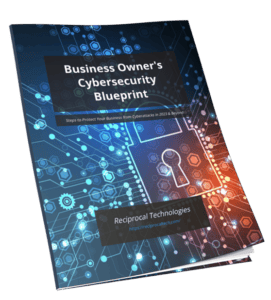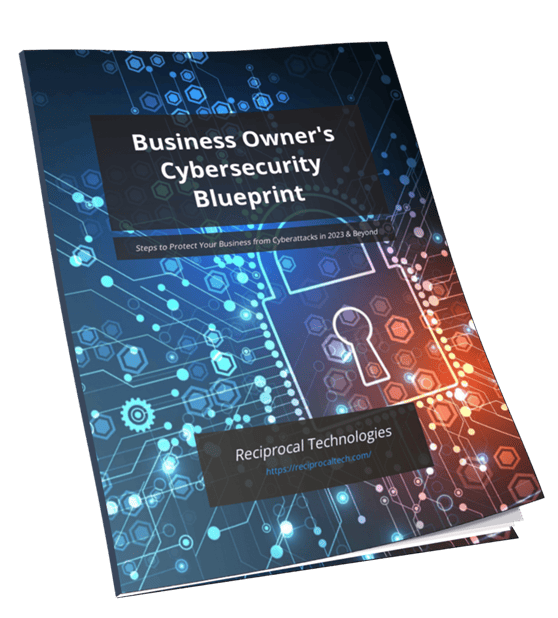Automation in Managed Services: Why It’s Not Just for Big Companies

You’re running a growing business ready to expand to more employees and maybe locations! But your IT person (yes, singular) spends half their day resetting passwords and the other half putting out fires. Meanwhile, other companies talk about their fancy automation tools and think, “Must be nice to have that kind of budget.”
Automation isn’t the exclusive playground of Fortune 500 companies anymore. It’s become as accessible as ordering lunch through an app. The real question isn’t whether you can afford automation in your managed services. It’s whether you can afford to keep doing things manually.
The David and Goliath Story Nobody’s Telling You
Remember when having a website meant hiring a team of developers? Now anyone can build one over the weekend. The same has happened with IT automation. What used to require massive infrastructure and six figure investments now runs on cloud platforms that cost less than your monthly coffee budget.
Small businesses are actually perfect candidates for automation. Why? Because every minute saved matters more when you don’t have armies of IT staff. That password reset that takes 15 minutes? Automated in seconds. Software updates across all computers? Happening while everyone sleeps. Backup verification? Running itself and only bothering you if something’s wrong.
The beauty is that modern automation tools grow with you. Start small with basic task automation and expand as you see the benefits rolling in. No need to automate everything overnight like you’re preparing for the robot apocalypse.
What Automation Actually Looks Like for Regular Businesses
The Everyday Wins You’re Missing
Let’s get practical. Automation for smaller businesses isn’t about replacing humans with robots. It’s about letting humans do human things while computers handle the repetitive stuff that makes everyone want to bang their head against the desk.
Think about employee onboarding. New hire joins, and automation creates their email account, adds them to the right groups, installs necessary software on their computer, and schedules security training. What used to take hours now happens before their welcome coffee gets cold.
Or consider patch management. Instead of manually updating 30 computers and hoping Bob in accounting doesn’t postpone his updates for six months, automation handles it all. Updates roll out during off hours, reports tell you what succeeded or failed, and your systems stay secure without the nagging.
The Money Talk Everyone Avoids
Let’s address the elephant in the room: cost. Traditional IT wisdom says automation requires huge upfront investments. That’s like saying you need a Ferrari to get to work. Sure, it’s nice, but a reliable Honda does the job just fine.
Cloud based automation tools operate on subscription models. You’re looking at anywhere from $10 to $50 per user per month for comprehensive automation platforms. Compare that to the cost of hiring additional IT staff or the productivity lost to manual processes. The math becomes pretty obvious.
One accounting firm we service automated their backup testing and reporting. Previously, they paid their IT person four hours weekly to manually verify backups. At $75 per hour, that’s $15,600 annually. The automation tool? $200 monthly. They saved over $13,000 in the first year alone.
Building Your Automation Strategy Without Buzzwords
Start where it hurts most. What task makes your IT team groan every Monday? What request floods the help desk? That’s your automation starting point. Maybe it’s user provisioning, maybe it’s report generation, or maybe it’s those dreaded software inventory audits.
Pick one process. Automate it. Measure the time saved. Use that win to build momentum for the next automation project. This isn’t about transforming into a tech company overnight. It’s about gradually making your business run smoother while everyone wonders how you suddenly got so efficient.
Integration matters too. Your automation tools should play nice with existing systems. If your automation solution requires rebuilding everything from scratch, it’s the wrong solution. Modern platforms connect with what you already have, like adding Lego blocks to your existing castle rather than demolishing and starting over.
The Human Element Still Matters
Here’s something the automation vendors won’t tell you: automation without human oversight is like driving with your eyes closed. You still need people making strategic decisions, handling exceptions, and ensuring the automation serves your business goals.
Smart automation enhances your team’s capabilities rather than replacing them. Your IT person stops being the password reset champion and becomes the efficiency architect. They’re designing workflows, improving processes, and actually preventing problems instead of just reacting to them.
This shift is especially powerful for smaller companies. When you can’t afford to hire specialists for every IT function, automation fills those gaps. Suddenly, your small IT team operates like a much larger department, handling complex tasks that would typically require dedicated personnel.
Frequently Asked Questions About IT Automation
How much technical expertise do we need to implement automation?
Less than you think. Modern automation platforms are designed for business users, not programming wizards. If you can create rules in Outlook or build a basic spreadsheet formula, you can handle most automation setup. Managed service providers can handle the complex stuff while you focus on defining what needs automating.
What’s the typical ROI timeline for automation in small businesses?
Most businesses see returns within 3 to 6 months. Quick wins like password resets and user onboarding show immediate time savings. Longer-term benefits like reduced errors and improved compliance become apparent within the first year.
Will automation make our business less personal or responsive?
Actually, the opposite happens. When routine tasks are automated, your team has more time for meaningful interactions. Instead of making customers wait while someone manually processes their request, automation handles the mundane parts while humans focus on solving unique problems and building relationships.
What happens if our automated systems fail?
Good automation includes failsafes and alerts. When something breaks, you know immediately instead of discovering it days later. Plus, manual overrides ensure you can always fall back to human intervention when needed. Think of automation as cruise control, not autopilot.
How do we know what to automate first?
Track where your IT team spends their time for a week. The most repetitive, time consuming tasks are your prime automation candidates. If someone’s doing the same thing more than three times weekly, it’s probably worth automating.
Your Next Move in the Automation Game
Automation in managed services isn’t about keeping up with big companies anymore. You can work smarter with the resources you already have! Every business, regardless of size, has repetitive tasks begging for automation. The tools are affordable, the implementation is manageable, and the benefits are immediate.
The businesses thriving today aren’t necessarily the ones with the biggest IT budgets. They’re the ones using automation strategically to punch above their weight class. Your 25-person company can operate with the efficiency of a 100-person enterprise. You just need to stop thinking of automation as “someday” and start treating it as “today.”
About the Author
Author’s recent posts
Download the
Business Owner’s Cybersecurity Blueprint


